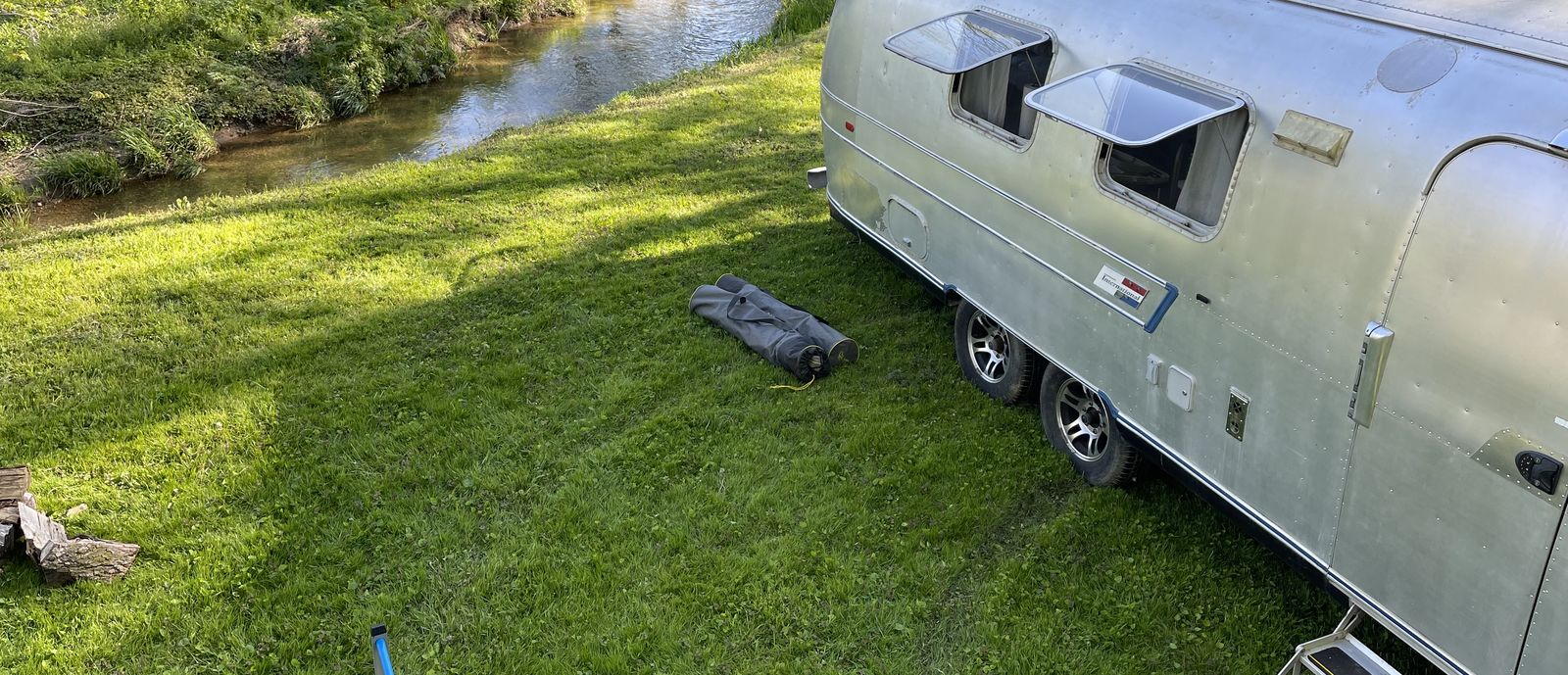There are so many camping options when you “Go RVing.” In this series, camping expert Jeremy Puglisi explores the different types of camping available throughout the U.S. Here’s everything you need to know about boondocking.

Where to Camp - A Guide to Boondocking
Camping expert Jeremy Puglisi shares his expert tips for different camping options, including boondocking.
Boondocking for Beginners
What Is Boondocking?
Boondocking is a form of camping outside of a traditional campsite with amenities. In the west, that usually means camping on Bureau of Land Management (BLM) land or national forests. In the east, it’s usually on private land.
RELATED: Boondock Basics: What You Need to Know
When boondocking, you won’t have access to facilities (i.e. showers or bathhouses) or amenities (i.e. hookups).

Expert Tips For A Successful Boondocking Trip
Now that you have a general idea of this style of camping, here are Jeremy’s top tips for beginner boondockers.
#1: Understand Your Rig’s Capabilities For Self-Contained Camping
Since you don’t have any hookups at boondocking areas, you’ll need to make sure you have a plan for water and power.
- Water: Make sure you have a full fresh water tank and bring along some extra jerry cans.
- Power: You can operate off a solar system if you have one. If not, you’ll need to understand your batteries and what kind of power they can provide.
- Also, make sure to have a plan for dumping your tank on your way out as you’ll likely fill it on your trip. This will vary depending on your tank size, amount of people camping, and the duration of your trip.
#2: Build Up Your Boondocking Skillset
For your first boondocking trip, keep it close to home and civilization so you can easily get to any amenities or supplies that you might need, or in case something doesn’t go as planned. Over time you’ll get better and better at going off the grid and can build up your confidence for multi-night stays deep in nature.
RELATED: Boondock Basics: The Only Gear Guide You’ll Ever Need

#3: Gather Information Before Your Trip
If you’re boondocking on public land, call the local office ahead of time, so you know where you’re allowed to boondock and any road conditions that you might need to be made aware of when traveling by RV. You’ll want to pay particular attention to the access roads and make sure your RV can easily access the camp spot.
If you’re boondocking on private land, call your host ahead of time and ask for pictures of the camping location and access roads.
For those camping with pets, make sure your pet is allowed at the boondocking site, any wildlife information, and other regulations you’ll need to follow.
#4: Check Local Weather Before You Go
Check the weather leading up to your trip and pay particular attention to perception and temperatures, especially at night. If you’re camping near water and there’s rain in the forecast, you’ll likely want to reschedule your trip to avoid any effects from flooding.
If temperatures are expected to be near freezing, make sure you have a plan for your water pipes and extra propane to run your RV furnace.
RELATED: 8 Tips For Off-Grid RV Adventures
#5: Bring Your Own Entertainment
You won’t be at a campground full of other campers and an activity schedule, so if you’re camping with kids, this tip is especially important. A lightweight game that’s easy to set up, like ladder ball, is one of our favorites.
RELATED: Get The Kids Excited About These Outdoor Activities While RVing
#6: Don’t Assume You Can Have A Campfire
Make sure you’re allowed to have a campfire on the land where you’re camping whether it's on BLM land, national forests, or private land. This will vary by time of year and region by region. Also, check local regulations on bringing in wood from an outside source.
RELATED: Leave No Trace At The Campground
#7: Bring Your Favorite Camping Items
To reiterate, when you’re boondocking, you won’t be near amenities like a campground store. Make sure you bring your favorite camping items whether it be games, food, or something else. For us, it’s ice cream, so when heading out on a boondocking trip, I always make sure the freezer is stocked.
#8: Relax And Enjoy
If you’re boondocking off the grid, you might not have cell phone reception. Embrace unplugging and enjoy your natural surroundings.
Check out more of Jeremy’s “Let’s Go Camping” videos on Go RVing’s YouTube channel.











